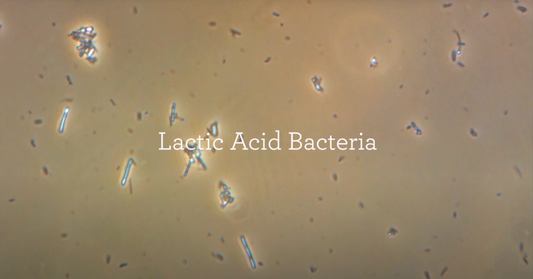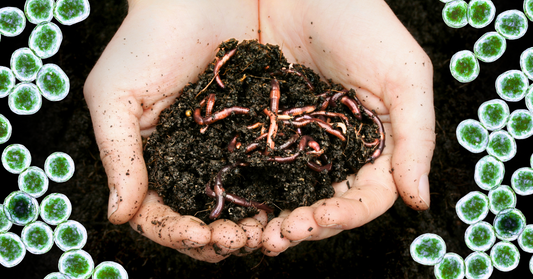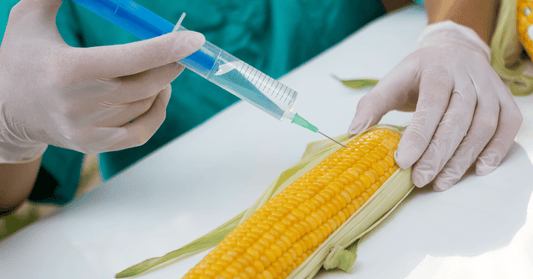
EM•1® for Chickens & Poultry
EM•1® offers a wide range of anticipated impacts and benefits when used with chickens and poultry, touching on animal health, environmental control, and overall farm economics. These benefits stem from the diverse community of beneficial microorganisms (Yeast, Photosynthetic Bacteria, and Lactic Acid Bacteria) in EM•1®.
Here are the key impacts and benefits:
1. Enhanced Gut Health & Digestion:
Probiotic Effect: EM•1® colonizes the chickens' gastrointestinal tract with beneficial microbes, promoting a balanced gut flora.
Improved Nutrient Absorption: This healthy gut microbiome aids in the breakdown of feed, leading to better digestion and more efficient nutrient absorption. Studies have shown improved feed conversion ratios.
Reduced Appetite/Increased Utilization: Some observations suggest more efficient utilization of feed.
2. Disease Prevention & Immunity:
Competitive Exclusion: The beneficial microbes in EM•1® competitively exclude (crowd out) harmful pathogens like Salmonella, E. coli, and Clostridium perfringens in the gut and environment.
Strengthened Immune Response: A healthy gut is crucial for a robust immune system. EM•1® contributes to a stronger immune response, reducing susceptibility to diseases and infections.
Reduced Mortality Rates: Studies have shown lower mortality rates in EM-treated groups, especially in disease-prone areas.
Decreased Need for Antibiotics: By supporting overall health and suppressing pathogens, EM•1® can reduce the reliance on antibiotics and other drugs.

3. Odor Control & Air Quality:
Ammonia & Hydrogen Sulfide Reduction: EM•1® actively breaks down putrefactive (odor-causing) organic matter, significantly reducing harmful gases like ammonia (NH3) and hydrogen sulfide (H2S) in poultry houses and manure. Levels of ammonia can drop significantly.
Improved Air Quality: Lower levels of these noxious gases create a healthier environment for both birds and farm workers, reducing respiratory stress on the animals.
Antioxidant Effect: EM•1® has an antioxidant effect that resists putrefaction, preventing noxious odors from forming.
4. Litter & Waste Management:
Accelerated Litter Decomposition: EM•1® speeds up the breakdown and fermentation of poultry litter, turning it into valuable, well-decomposed organic fertilizer.
Extended Litter Life: Through controlled litter management protocols, EM•1® can extend the usable life of litter for multiple flocks, reducing the need for frequent clean-outs.
High-Quality Manure: EM-treated manure is of higher quality, with reduced odor and enhanced nutrient availability, making it a better compost or soil amendment.
5. Production Performance:
Improved Growth & Body Weight: Trials have indicated that EM•1® can promote growth and result in higher average live body weight in broilers.
Increased Egg Production & Quality: For layers, EM•1® has been associated with increased egg production percentage and average egg weight.
Economic Benefits: By improving feed efficiency, reducing disease incidence (and thus antibiotic costs), and enhancing production, EM•1® can contribute to a more cost-effective and profitable poultry operation.
Overall, EM•1® works as a holistic solution, improving poultry health from the inside out (gut health) and managing the environmental factors (litter, odor) that significantly impact a flock's well-being and productivity.

Relevant studies of EM•1® and poultry
EM in raising poultry in China (over one million chickens)
Effect of effective microorganisms on production and quality performance of Rhode Island Red layers
Effect of effective microorganisms on growth parameters and serum cholesterol levels in broilers
Effective Microorganisms as an alternative to antibiotics
EM•1® Application Notes for Chicken & Poultry
EM•1® can significantly benefit chicken and poultry health, improve their environment, and enhance productivity through beneficial microbial action. Always use activated EM•1® and unchlorinated water for dilution.
Mixing with Drinking Water (Most Common & Easiest):
Ratio: Start with a dilution of 1:1000 (1 part activated EM•1® to 1000 parts unchlorinated water). This is approximately 1.25 teaspoons of activated EM•1® per gallon of water.
Application: Add this diluted solution to their fresh drinking water each time you refill their water.
Notes: Ensure consistency. This is a very effective way to provide daily probiotic support.
Mixing with Feed:
Ratio: Lightly moisten their feed with a diluted solution of 1:500 (1 part activated EM•1® to 500 parts unchlorinated water). This is about 2.5 teaspoons per gallon of water. Use just enough to dampen the feed without making it soggy.
Application: Mix the diluted solution thoroughly with a portion of their daily feed.
Notes: Introduce gradually. Some chickens might be hesitant initially. Only prepare enough dampened feed for immediate consumption to prevent spoilage.
Litter Treatment & Odor Control (Coops/Housing):
Ratio: Use a dilution of 1:50 to 1:100 (1 part activated EM•1® to 50-100 parts unchlorinated water).
Method: Spray evenly onto chicken litter, bedding, and coop surfaces (walls, floors).
Frequency: Apply as needed, typically 2-3 times per week or after cleaning, to control odors (especially ammonia), break down waste, and suppress harmful pathogens in the environment. This helps extend litter life.

Misting/Fogging (for larger operations):
Ratio: Typically a lighter solution of 1:100 to 1:500.
Method: Use a misting or fogging system to disperse EM•1® throughout the poultry house.
Benefits: Improves air quality and reduces airborne pathogens.
Manure Pit/Lagoon Treatment:
Ratio: Varies greatly by volume and severity, but typically starts at 1:10,000 to 1:20,000 for initial large treatments, followed by maintenance doses.
Method: Pour or inject directly into manure pits or lagoons.
Benefits: Reduces odors, aids in waste breakdown, and improves effluent quality.






